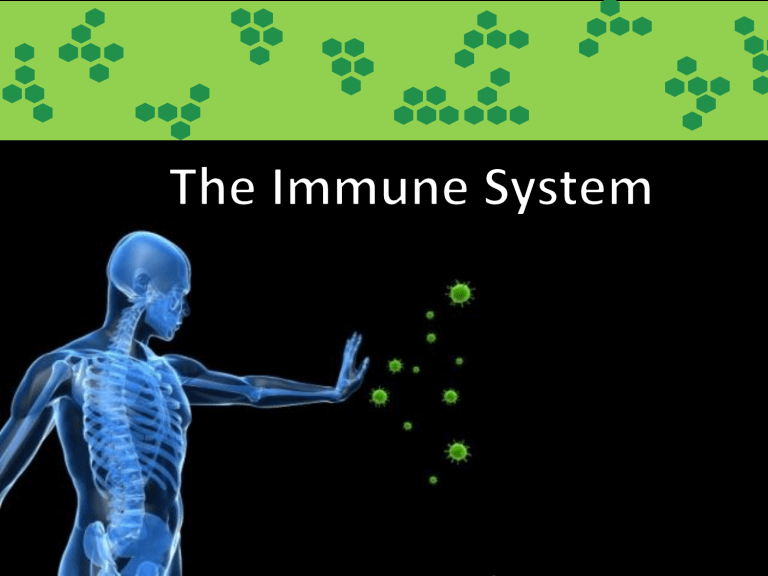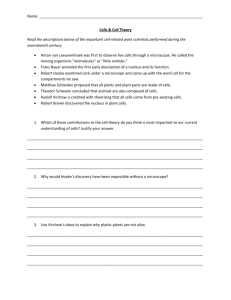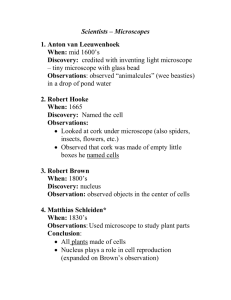File - Summerville FFA

Functions to protect your body from harmful things, called
pathogens.
Pathogens usually arise from outside your body making them foreign materials.
Why are pathogens harmful?
They can invade your cells and cause infectious diseases.
These can include fungi, viruses, bacteria, and parasites.
Fungus Virus Bacteria Parasite
If we did not have an immune system, our bodies would be vulnerable to the pathogens and we would likely die from disease.
Fungus Virus Bacteria Parasite
Special cells in your body fight these pathogens.
These pathogen fighters are white blood cells, or leukocytes. WBC for short!
They travel in your blood with red blood cells, or erythrocytes. RBC for short!
Red Blood Cells
Erythrocytes
White blood cells, WBC, in the blood are able to travel around the entire body to best find pathogens that invade the body.
There are different kinds of white blood cells.
Neutrophil Basophil
Lymphocyte
Eosinophil
Monocyte
Each targets a different pathogen.
For instance, eosinophils target parasites.
Identifying white blood cells
Neutrophils: have a segmented nucleus. The most common white blood cell. Fight bacteria!
Monocytes: have a large indented nucleus. Largest white blood cell.
Destroy all pathogens!
Lymphocytes: dark blue, round nucleus. Almost no cytoplasm, nucleus makes up the whole cell.
Fight viruses!
Identifying white blood cells
Eosinophils: Large red granules fill the cell. They have a segmented nucleus. Fights parasites!
Basophils: Large blue/purple granules fill the cell. They have a segmented nucleus not seen because of the granules! Fights allergies!
Note basophils are rarely seen!
To visualize cells for a microscope, we use stains.
Despite being called white blood cells, when stained, leukocytes appear purple.
We will be investigating a blood smear with an online microscope.
Open up your internet browser to
Microscope Blood
This is an image of a healthy person’s blood smear.
Complete the Online Microscope
Lab Activity!
1 – Divide class into healthy and unhealthy blood!
2 – Each student receives a plus cell counter transparency and worksheet.
3 – Open up online microscope website and follow worksheet instructions to count cells.
4 – Report the total numbers of cells counted to the teacher to input into graph.
When excel table is complete, select the bar graph by clicking on it, hit copy or CTRL+C, and paste the graph to this slide.
Discuss the results with the class.
Copy completed graph here !
We can tell a lot about a person when we look at their blood.
1. Which blood, healthy or unhealthy, had more white blood cells?
2. What does having high numbers of neutrophils tell us about the unhealthy person?
3. If a person has a high number of eosinophils what could we determine the pathogen infecting them is?








